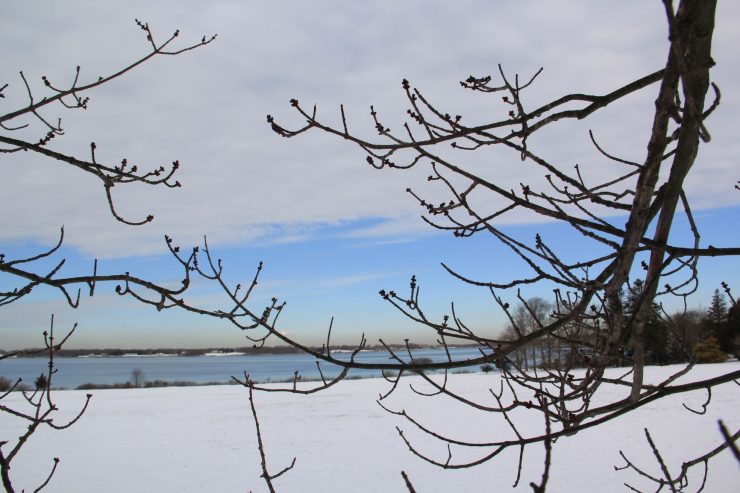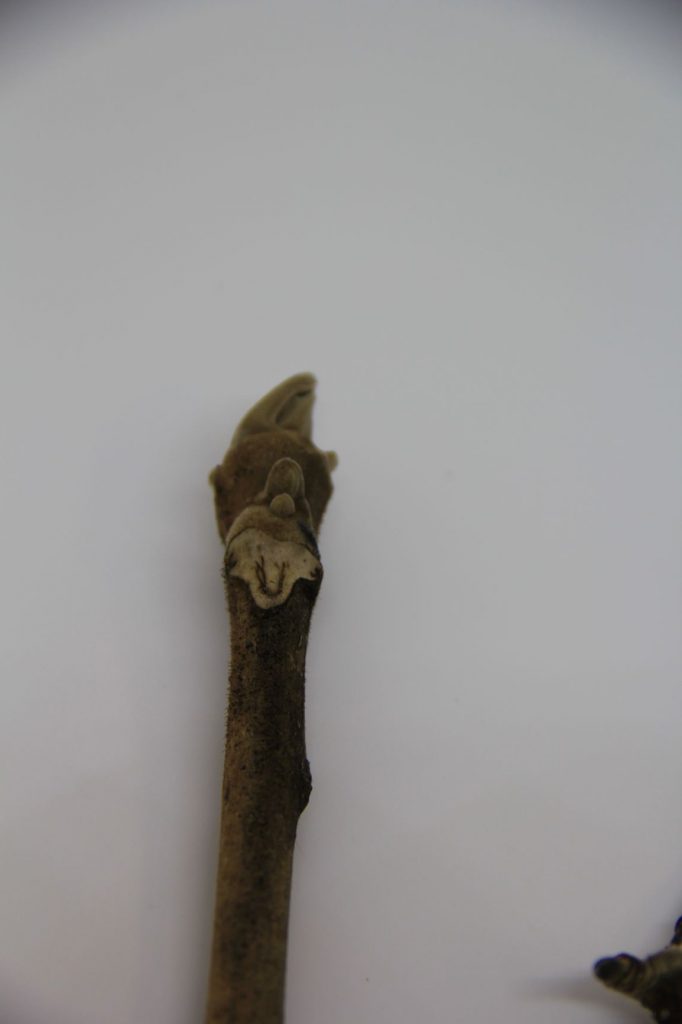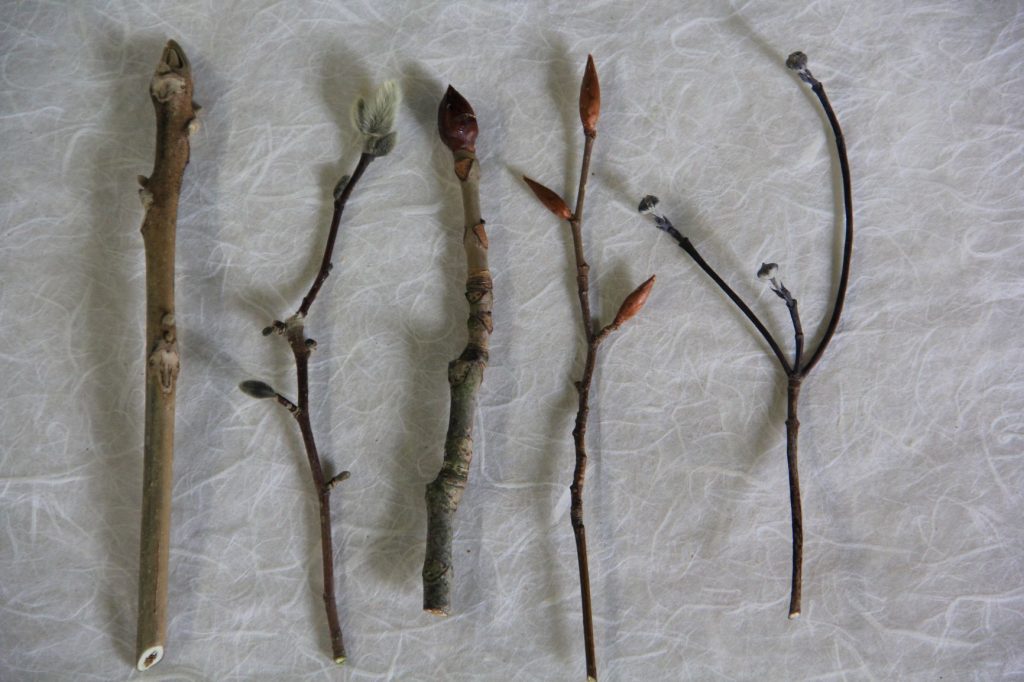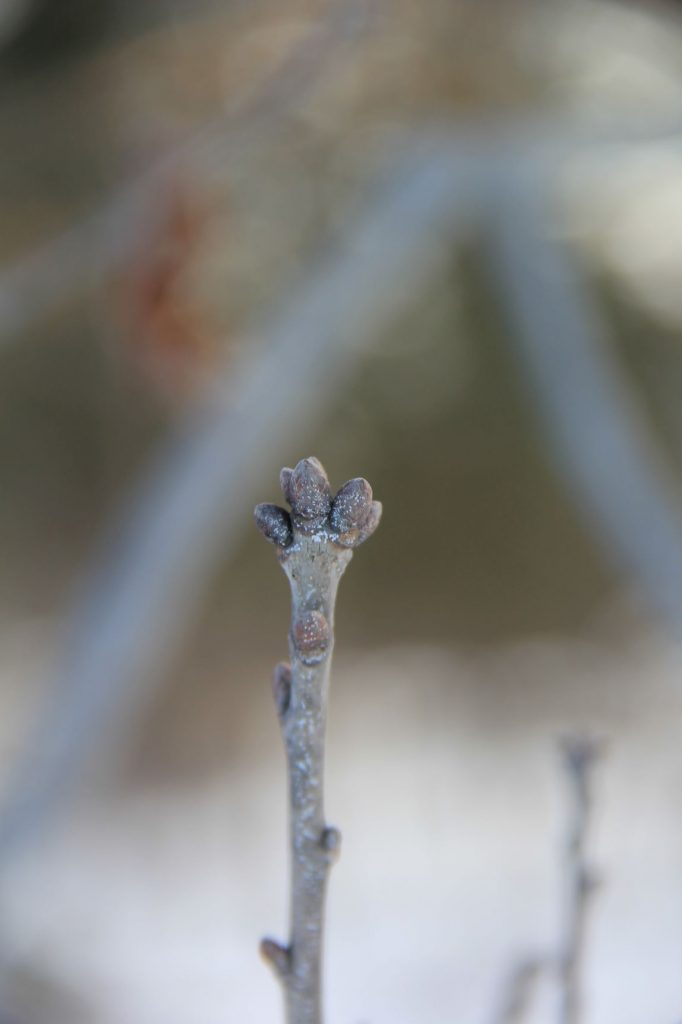The Fine Details

It’s astonishing how much time passes as I examine and admire the fine details of tree twigs. In the winter, a bare tree is just a bare tree from a distance, but upon closer inspection, it is incredible how much a twig can tell you. The beautiful yet unusual physiology of each bud — the color, shape, size and composition — tells us a story about each plant and gives us a look at what will come in the spring. All trees follow similar patterns, but the expression can be very different. Each species has found its own unique way to brave the winter effectively and set itself up for a long summer of growth.
A little bit of terminology: the leading bud at the end of a given twig is called the terminal. Looking closer at the terminal bud, you may see overlapping pieces of tissue. These overlaps are called bud scales and are a great way to identify trees. Moving down the side of the twig, the small buds emerging outwards are known as axillary or lateral buds. The small indents with a slight change of color underneath the axillary buds are called leaf scars – they’re the scars left by leaves from a previous season. The space along the stem between axillary buds is the internode, or simply node. Continuing down, you will see several small circles around the stem and a change in color below it. This is the bud scar, and it represents one year of growth.

The Leaf scar of the Manchurian Walnut resembling a odd-looking face. Soft fuzz is also visible towards the top.
The buds I show here are some of the more distinct buds on the property. Horse Chestnut (Aesculus hippocastanum) has one of fattest terminal buds you will see. The twigs also have large leaf scars arranged on opposite sides of the twig. European Beech (Fagus sylvatica) has thin twigs with very long, skinny, light-brown buds. Touch the tip of any bud and it will feel very sharp. The flower buds of American Dogwood (Cornus florida) are unique, resembling gray onions, or mosques. The twigs are smooth and thin, and the buds are arranged opposite each other. The Star Magnolia (Magnolia stellata) has beautiful fuzzy white or gray buds, as do several other magnolia varieties. The twigs of the Star Magnolia very often have a jagged angle, since after flowering the growth changes direction; the twig almost appears to have been cut. Manchurian Walnut (Juglans mandshurica) has extremely thick twigs with prominent axillary buds and very large leaf scars, resembling an odd face. The top of the twig will have a slight fuzz and the terminal bud is beige in color and pyramidal in shape.

From Left: Manchurian Walnut ( Juglans mandshurica); Star Magnolia (Magnolia stellata); Horse Chestnut (Aesculus hippocastanum); European Beech (Fagus sylvatica); American Dogwood (Cornus florida).
Next time you’re walking in the garden or through the woods on winter day, stop and take a closer look at the tree branches. You’d be amazed at the beauty you’ll find in details.

The bud cluster of White Oak shining in the morning sunshine.
